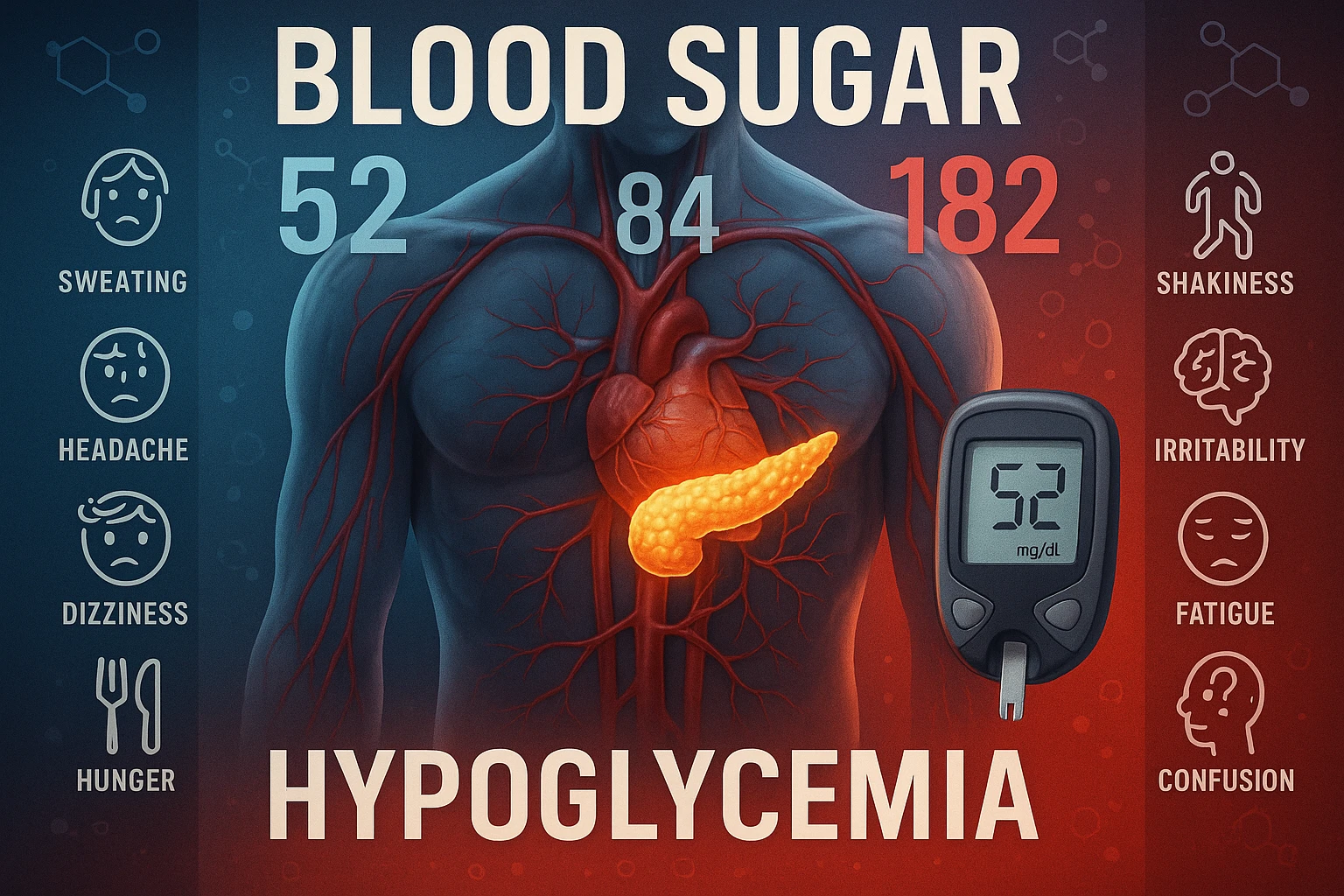Understanding Hypoglycemia: What Blood Sugar Levels Indicate Danger?
Introduction
Ever wondered why you suddenly feel shaky or confused even on a good day? It could be that your blood sugar levels are taking a nosedive. Welcome to the perplexing world of hypoglycemia, where navigating blood sugar levels feels more like balancing on a tightrope. Today, we’ll dive deep into what blood sugar levels indicate danger and how you can manage them with aplomb. Hold on tight as we embark on this sweet journey towards better health!
Key Takeaways
- Hypoglycemia occurs when blood sugar levels dip below 70 mg/dL.
- Age and medication can significantly alter hypoglycemia risk.
- Technology like CGMs can boost hypoglycemia management.
- Educational programs are vital for improving awareness and prevention.
Table of Contents
Causes and Symptoms
So, what sends your blood sugar into a spinning freefall? Some culprits include excessive insulin, skipped meals, or even too much exercise—yes, you read that right! When this happens, your body starts sounding the alarm with symptoms like rapid heartbeat, dizziness, and those unsettling shakes. But here’s the delicious twist: knowing these symptoms can save you a world of headache and heartache.
- Hypoglycemia typically kicks in when blood sugar levels fall below 70 mg/dL.
- Symptoms include shakiness, confusion, and in severe cases, loss of consciousness.
- Immediate sugar intake, like juice, can counteract the condition quickly.
Risk Factors and Economic Impact
Let me put on my science hat for a sec… Studies reveal a whopping 61.6% of insulin-treated diabetes patients experience hypoglycemia, with seniors particularly at risk. Imagine the doctor bills stacking up—that’s because hypoglycemia can be a drain on your wallet as well as your well-being, racking up an average of an extra $10,405 per patient stay. Now, let’s chew on this for a moment: mitigating these risks means making smarter choices for your health and your finances.
- Age and medication are significant risk factors for hypoglycemia.
- Aging adults face a substantial risk, with over 15.9 million affected.
- Economic studies highlight a hefty financial burden on healthcare systems.
Technology and Prevention
Buckle up, because the research is about to get juicy… In this tech-savvy age, Continuous Glucose Monitors (CGMs) and hybrid closed-loop insulin pumps are revolutionizing hypoglycemia management. Experts, like Dr. Amisha Wallia, emphasize the role of CGMs in enhancing surveillance. By demystifying blood sugar levels, these devices empower patients to manage hypoglycemia like pros.
- CGMs significantly aid in detecting and managing hypoglycemia events.
- Structured education can restore awareness among those affected.
- Technological advances improve safety and autonomy in diabetes management.
FAQs
From the curious to the concerned, here are some frequently pondered questions about hypoglycemia.
- Q1: What is hypoglycemia?
A1: Hypoglycemia occurs when blood sugar levels drop below 70 mg/dL, causing symptoms like shakiness and confusion. - Q2: Who is at greatest risk for hypoglycemia?
A2: Older adults and insulin-treated individuals face greater risks due to age-related factors and medication. - Q3: How can hypoglycemia be prevented?
A3: Prevention includes using CGMs, receiving structured education, and maintaining a balanced diet.
Conclusion
So there you have it, folks! From pinpointing dangerous blood sugar levels to leveraging technology for better management, mastering hypoglycemia is not just your average science project—it’s a journey to lifelong health. Whether you’re feasting on plant-based foods or navigating the aging process, remember that knowledge is your most nourishing ally. Let’s slice through the hype: pay attention to your body, stay informed with evidence-backed insights, and your blood sugar levels can be as sweet as pie. Cheers to a healthier, hypoglycemia-free life!


Leave a Reply